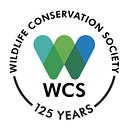Papua New Guinea Forest Nursery Program Supports Livelihoods and Wildlife
By Thomas Mutton | December 17, 2019
The Highlands of Papua New Guinea are one of the most biologically rich regions on earth. The magnificent forests of the region have supported the culture and livelihoods of communities for millennia and are famed around the world for iconic species such as birds-of-paradise and tree kangaroos.
However, as the population rapidly grows and communities seek to increase cash incomes, the region’s incredible biodiversity is declining. Iconic species such as the Goodfellow’s tree kangaroo and Pesquet’s parrot are now at risk of extinction. Forest areas are being degraded and removed entirely — both for timber and so that local people can extend garden areas adjacent to their villages.
In an effort to protect the region’s biodiversity, WCS (Wildlife Conservation Society) is working to support communities committed to sustainably managing their forests and wildlife while also strengthening the sustainability of community livelihoods.
As part of this work WCS has supported three local organizations to establish community forest nurseries in their provinces: KGwan eco-habitat (Danbagl, Simbu Province), Individual Restoration and Reform Movement (Womkama, Simbu Province), and WAM U5 (Wamuifa, Eastern Highlands Province).
In their respective communities, these groups have established forest nurseries and trained seven community foresters in the basics of identifying native timber tree species, seed handling (seed collection, extraction and propagation), nursery management, and the planting of trees. Propagation methods for 11 native species have been developed and taught to the community foresters.
“The timber from these trees used to last for generations. Now people are often forced to use young or softwood trees that might not even last a decade,” says WCS Forest Ecologist Tory Kuria.
In total, over the last two years, more than 30,000 community-grown Highlands timber and tree crops seedlings have been produced. These have been planted over 42 hectares, which is approximately equal to the total calculated area deforested in these communities between 2001–2013.
The community nursery program supports both human livelihoods and wildlife conservation in the communities. Many formerly abundant Highlands hardwood timber species such as Nothofagus (beech wood) and Fagraea (iron wood) have now been overharvested. “The timber from these trees used to last for generations. Now people are often forced to use young or softwood trees that might not even last a decade,” says WCS Forest Ecologist Tory Kuria.
This means a much greater number of trees now need to be harvested over a person’s lifetime for housing and construction. When combined with rapid population growth, this pressure could drive extensive deforestation in the region. The community nursery program has therefore been propagating traditional hardwood timbers and growing them in community woodlots.
WCS is working with communities to develop participatory land use plans that ban the planting of non-native trees in intact forest areas and put community-designed limits on unsustainable hunting and deforestation practices.
These trees are also used to reforest degraded areas and improve soil quality in non-native grasslands for future agricultural use.
To provide alternative high-protein and drought-resistant food sources, tree crops such as karuka are also grown. These tree crops are then planted in areas the communities identified as in need of erosion control, such as around water sources and alongside roads. Such activities support native wildlife through the expansion of usable habitat.
By comparison, non-native timber species such as eucalypts and pine degrade forest function despite their popularity. WCS is therefore working with the communities to develop participatory land use plans that ban the planting of non-native trees in intact forest areas and also put community-designed limits on unsustainable hunting and deforestation practices.
The community nursery program was established with support from the United Kingdom’s Darwin Initiative and is now being continued under funding from the Australian Government and the European Union’s Sustainable Wildlife Management program. The WCS team is currently traveling to the remote village of Kwiop in Jiwaka province to establish a new nursery that will support the community’s goal of establishing a conservation area.
Follow this space for updates.
— — — — — — — — — — — —
Thomas Mutton is Terrestrial Conservation Advisor for the Papua New Guinea program at WCS (Wildlife Conservation Society).
